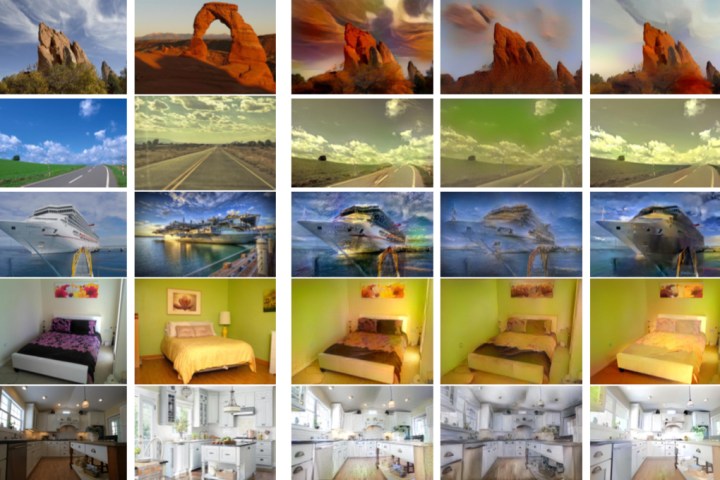
The research, published on March 22, builds on the artificial intelligence behind applications like Prisma, but instead aims to apply photorealistic effects instead of making that photo look like a certain painting style. Previous efforts to conduct automatic style transfers from photo to photo were either inconsistent in style matches or unable to handle a variety of different photos without obvious distortions. Photo-to-photo style transfers often resulted in distorted lines and perspectives, so instead the team from Adobe and Cornell developed a system that only considers color and lighting.
The new method, along with disregarding everything but that color and light information, also segments the photos into different parts, so the light in the sky of the reference picture is applied to only the sky in the second picture, even if the sky takes up a different amount of space than in that reference image. Since the system segments aspects, the effect is applied to the sky, not to the same area the sky takes up in the reference photograph.
By separating out the parts of the image and considering only color and light data, the software was able to successfully take a photo of a cityscape taken on a cloudy day and turn it into a cityscape at dusk, even turning the lights on inside some of the buildings. Since the system considers color, effects like shooting during golden hour could be mimicked, along with turning a summer photo into a fall scene.
The potential software appears to be more consumer-oriented than something that might make its way into Photoshop or Lightroom, but the program leaves opens up some interesting avenues. If a snapshot of a kitchen can be turned into a magazine-worthy image by copying the style of a professional interior photograph, what happens to that professional photographer’s career? Where is the line between style transfers of classic paintings and copying current copyrighted work?
The provided samples appear much more realistic than comparable programs, though many of them still have a few oddities. The researchers said their approach produced more photorealistic results than previous attempts, but identified further areas to develop the program, including enhancing the image segmentation and developing the system to run in real time.
Editors' Recommendations
- How $80 of photo processing software magically saved me thousands
- What is Photoshop Camera? How Adobe’s new A.I. app edits photos before you take them
- Photoshop for iPad: Users bemoan lack of features with the new software
- Adobe Photoshop Elements is getting so good, it edits photos for you
- How to make a watermark: A quick and easy way to protect your photos




